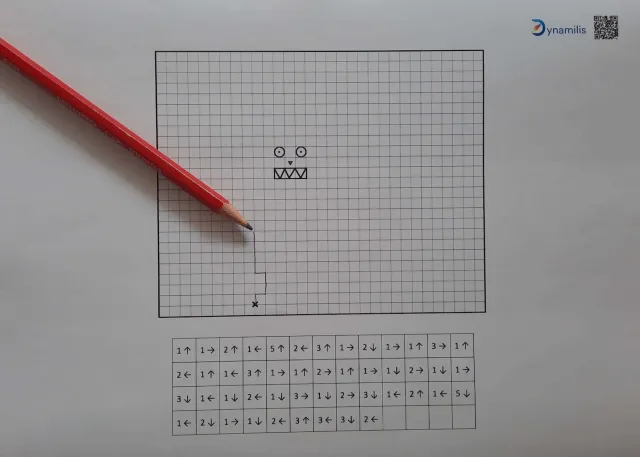With this handwriting activity, spatial orientation ability is practiced in the room and on the sheet. Following the lines precisely requires good hand-eye coordination and precision. It is important that the activity is performed slowly and accurately. The smaller the squares, the smaller the drawing movements and the more difficult the exercise.
Good spatial orientation skills allow letters to be written evenly on the lines, maintaining the correct size and shape. This contributes to handwriting that is aesthetically pleasing and legible. In order for children to orient themselves on the two-dimensional surface (on the page), it is important that they first have different experiences in the three-dimensional space.
Pencil, printed templates (see resources below).

Embark on a quest to unveil the secret creature hidden within the grid by following a trail of directional commands. Start at the marked "X" on the grid. Each command sequence, such as "2→," instructs you to move a certain number of squares in a specific direction: upwards (↑), downwards (↓), to the right (→), or to the left (←).
Proceed through the commands sequentially, drawing a continuous line from the starting point and through each move to reveal the concealed figure step by step. The journey will twist and turn, leading you to the final image; make sure to keep the pencil on the grid as you translate each command into a move, and the mysterious creature will gradually come to life before your eyes!
You might also like:
The digital handwriting activities for kids are both engaging and ideal for learning to write well in a personalized way
The handwriting assessment for kids quickly evaluates writing quality, including legibility and form
The handwriting worksheets for kids are available in many fonts, both cursive and manuscript, in an easy-to-print PDF format